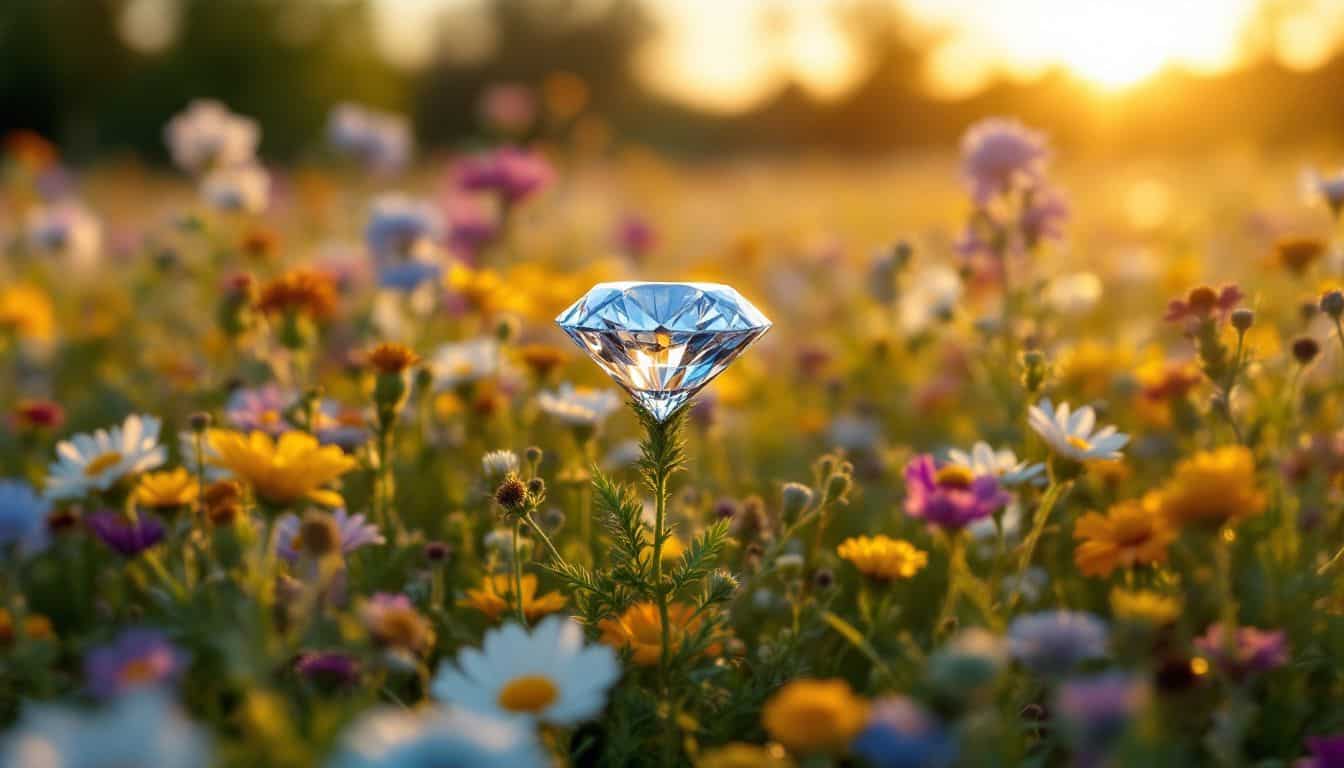Many people wonder what do diamonds symbolize beyond their sparkle and shine. These precious gems have stood as symbols of love and power for over 3,000 years. Our guide breaks down the rich meanings behind diamonds – from ancient beliefs to modern traditions.
Get ready to discover why these brilliant stones capture hearts and minds across cultures.
Key Takeaways
Diamonds have served as symbols of power and love for over 3,000 years, with the first diamond engagement ring given in 1477 by Archduke Maximilian to Mary of Burgundy.
Ancient Greeks called diamonds “adamas” meaning unconquerable, while colored diamonds (making up less than 1% of all diamonds) gained value after their discovery in Borneo around 600 AD.
Round brilliant diamonds are the most popular engagement ring choice, appearing in 75% of proposals worldwide, while Queen Elizabeth II’s engagement ring from Prince Philip in 1947 featured 11 diamonds.
Lab-grown diamonds could reduce greenhouse gas emissions by 9.58 million tonnes by 2100 and cut mineral waste by 421.06 million tonnes, offering an eco-friendly alternative to mined diamonds.
Each diamond shape carries unique meaning: round cuts represent timeless love, princess cuts show modern elegance, heart shapes symbolize romance, pear shapes reflect joy, and emerald cuts display sophistication.
Table of Contents
Historical Symbolism of Diamonds
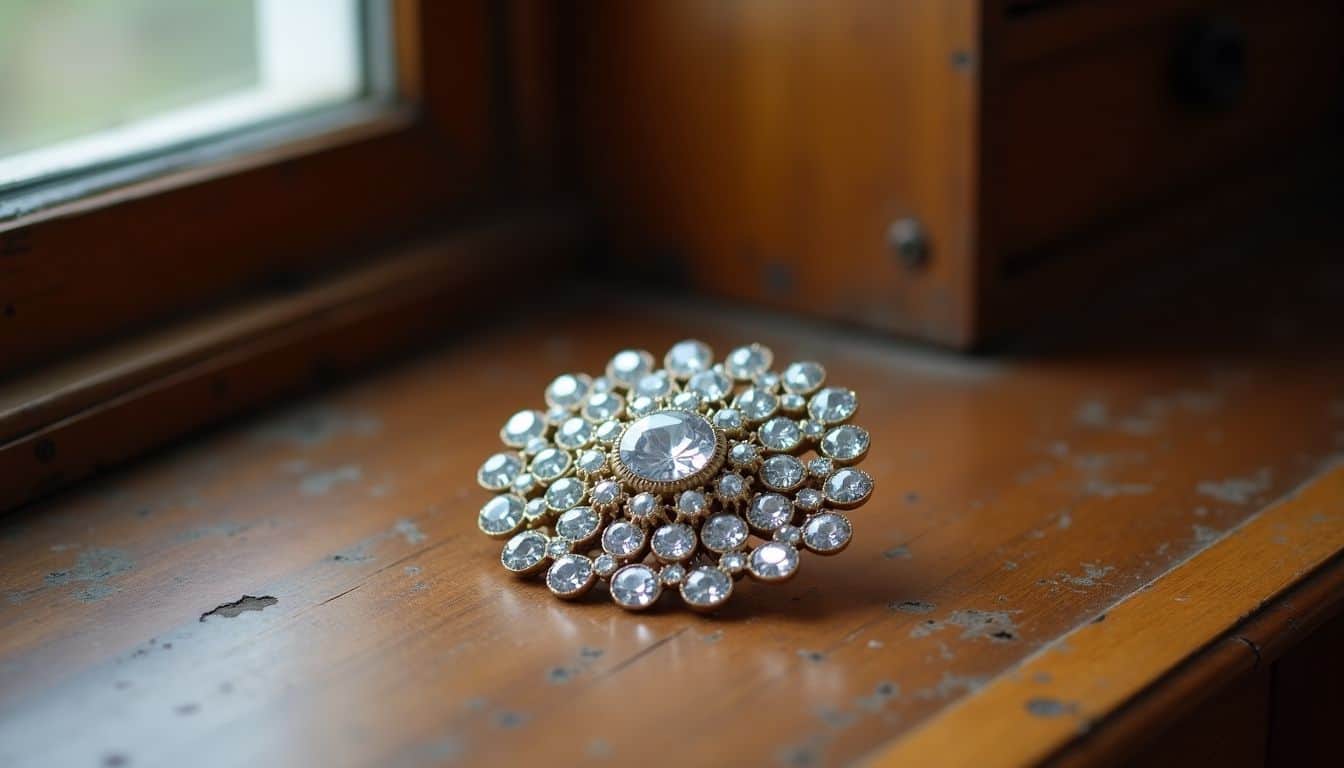
Diamonds have sparked awe since ancient times, from Indian maharajas to European monarchs. These precious gems served as powerful symbols of divine right and pure love through the ages, as seen in the first diamond engagement ring given by Archduke Maximilian to Mary of Burgundy in 1477.
Early associations with strength and invincibility
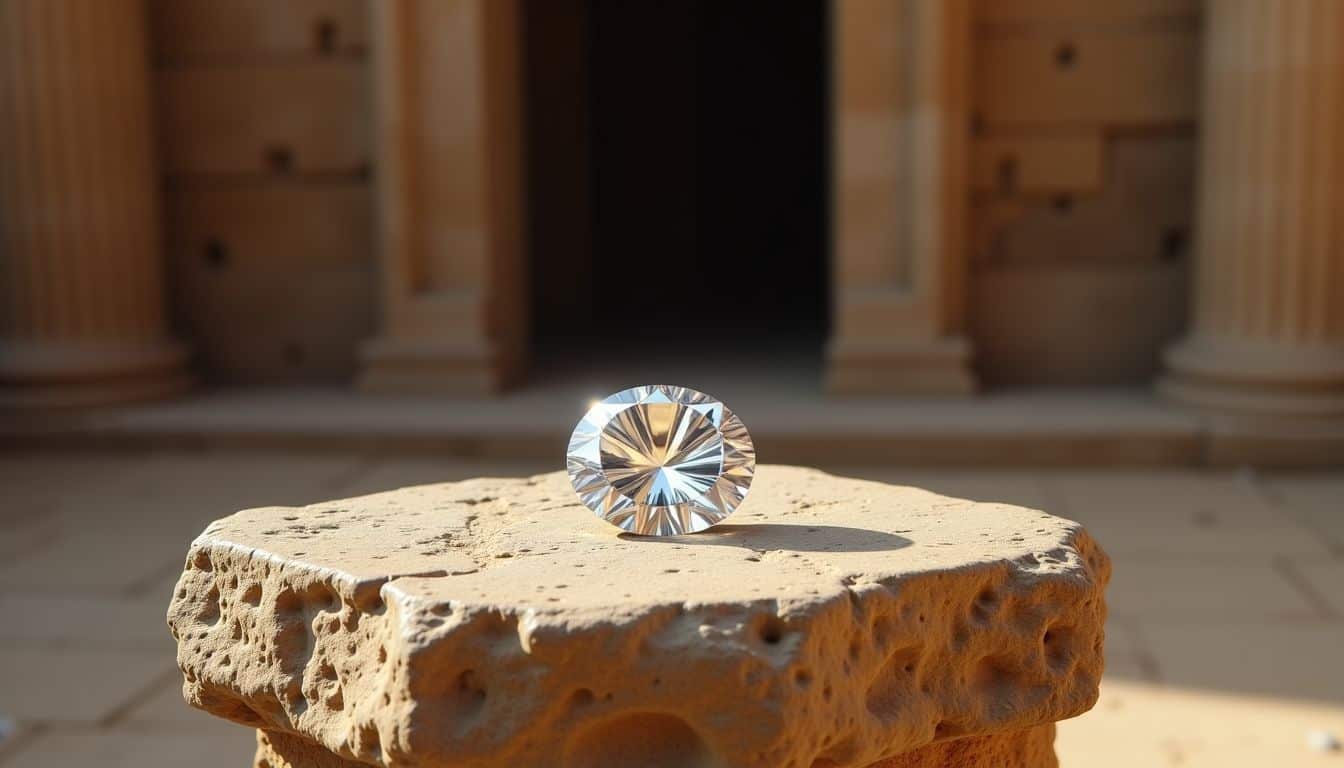
Ancient Greeks saw raw power in these precious gems. They named them “adamas,” a word that means unconquerable. These stones stood as symbols of great strength and eternal might. Greek warriors wore them as talismans into battle, sure of their protective magic.
The crystal’s natural hardness fed into myths of its divine origins.
A diamond is a piece of pure carbon that grew up under pressure and learned to shine bright.
The gods themselves used these jewels in Greek mythology. Stories tell of divine weapons and armor made from these hardest known substances on Earth. Ancient soldiers believed these gems could shield them from harm.
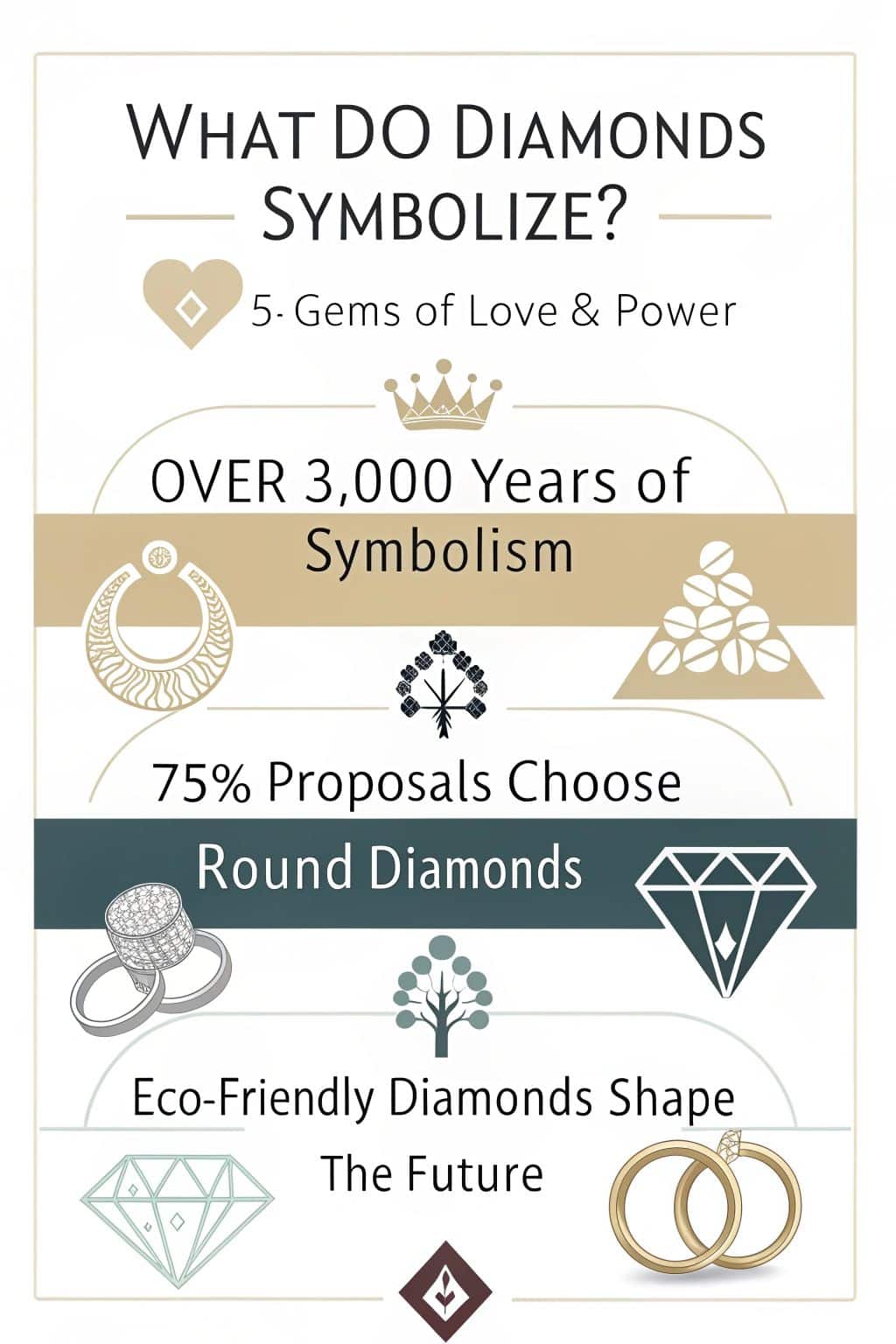
The stones’ clarity and brilliance sparked tales of their heavenly birth. Medieval knights later adopted this belief, carrying diamonds as protective amulets into combat.
Symbol of love in Medieval Europe
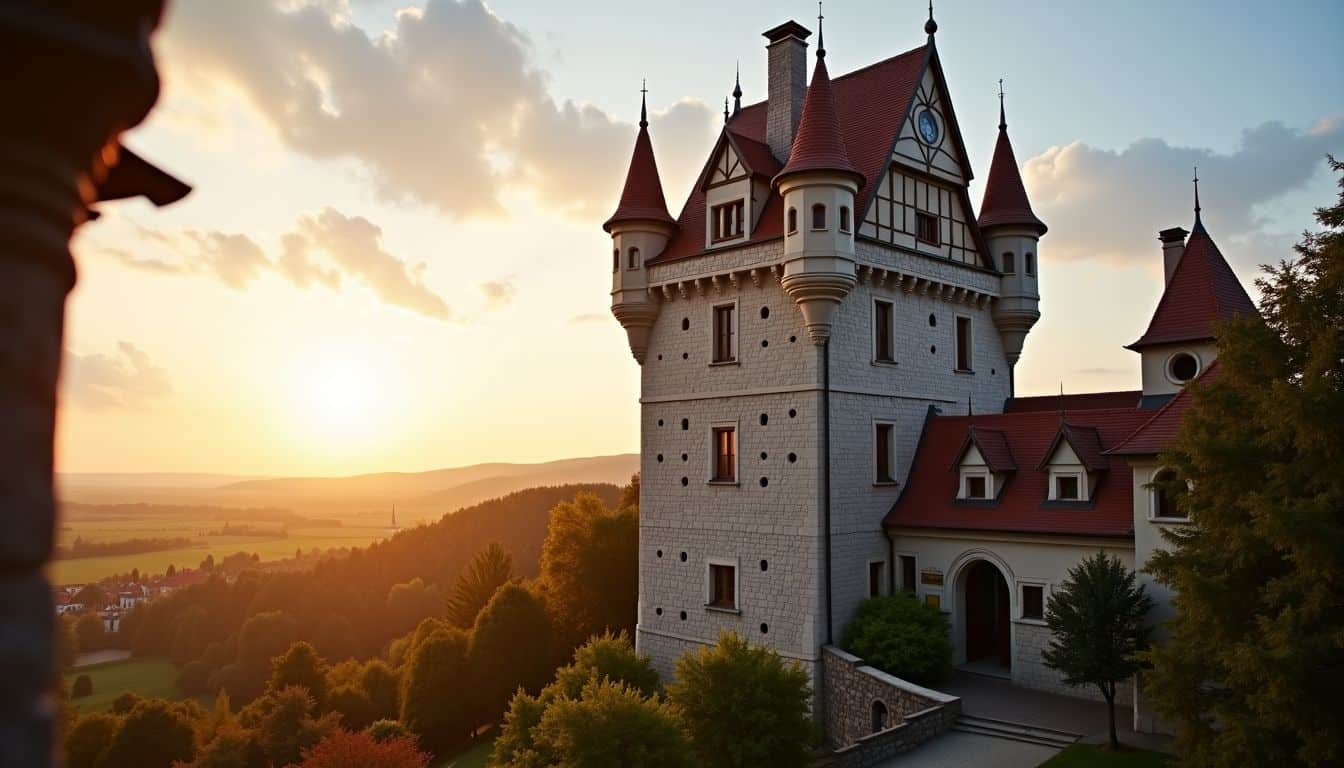
Diamonds sparkled their way into love stories during Medieval Europe’s romantic era. These precious gems gained special meaning as symbols of eternal love around 2,500 years ago. The tradition of diamond engagement rings started with a royal romance.
In 1477, Archduke Maximillian of Austria gave Mary of Burgundy the first diamond betrothal ring in recorded history. This grand gesture set off a trend among European nobles and wealthy families.
The practice of giving diamond rings spread through medieval society like wildfire. By 1725, diamond rings became the standard choice for wedding ceremonies across Europe. Rich merchants and nobles picked these sparkling stones to show their love and status.
The gems’ natural strength and brilliance matched perfectly with ideas about lasting romance. White gold settings made these precious stones shine even brighter on lucky brides’ fingers.
Diamonds as declarations of power in royal history
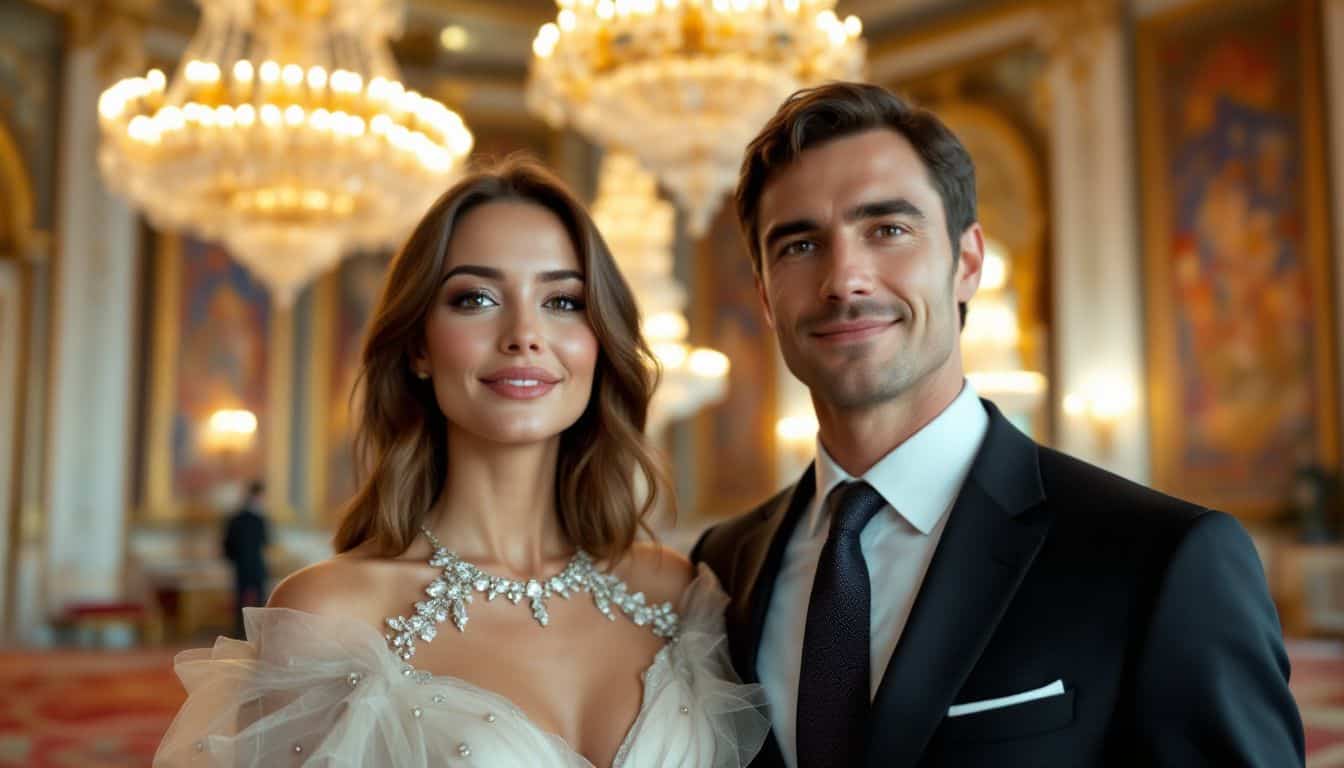
Royal families shifted the meaning of diamonds from love tokens to symbols of authority. Kings and queens wore these precious gems to show their power over their kingdoms. The British monarchy owned famous stones like the Koh-i-Noor, which sat in their royal crown.
These gems proved their right to rule and their wealth.
Crowns studded with bright stones became a clear sign of royal power throughout history. De Beers Consolidated Mines Ltd started controlling most diamond sales in 1888. This company helped make these gems even more special to royal families.
Royal leaders wore diamond-filled regalia during important events to remind people of their strength. The Hope Diamond stands as one of the most famous royal gems that showed both beauty and authority.
Evolution of colored diamonds in cultural value
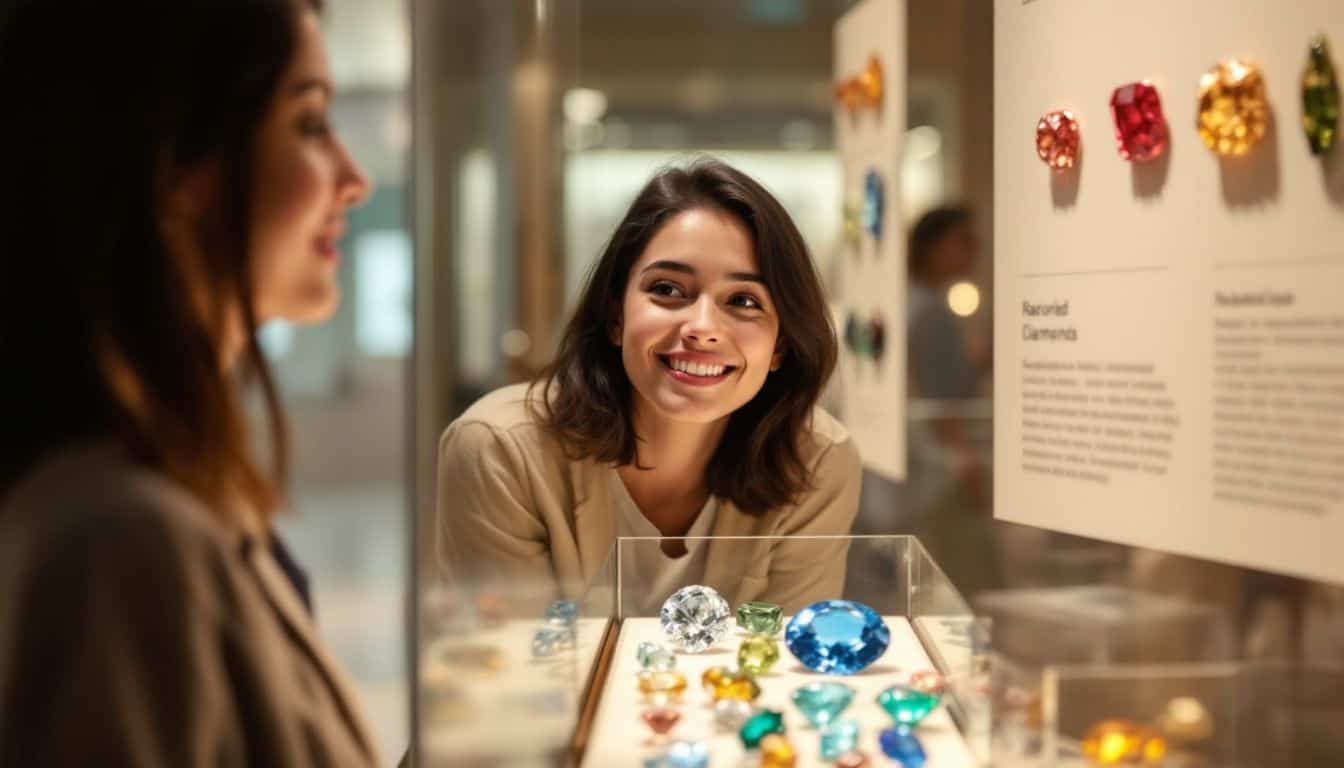
Colored diamonds have shaped our views of beauty across time. Pink, blue, and yellow diamonds stand as rare treasures in nature, making up less than 1% of all diamonds found. These fancy colored diamonds gained huge value after their discovery in Borneo around 600 AD.
Natural forces create these stunning hues through tiny changes in the diamond’s structure. From the subtle warmth of a champagne diamond as center stone to the deep intensity of blues, each color variation represents a unique geological process.
A diamond’s color tells its unique story through nature’s artistic touch
The cultural worth of colored diamonds grew stronger in the 1700s with finds in Brazil. Each shade brings its own special meaning – blue diamonds mean wisdom, pink ones show love, and yellow ones bring joy.
Famous gems like the Blue Hope Diamond prove how these rare stones catch people’s hearts. The 1970s discovery of colored diamonds in Australia added fresh sparkle to their appeal. Today, these gems serve as powerful symbols of both status and personal style for modern women.
Diamonds in Literature and Culture

Diamonds sparkle through countless stories and poems as symbols of pure love and inner strength – from Shakespeare’s sonnets to modern novels – making them shine bright in our cultural imagination…
Want to learn more about how these precious gems shape our stories? Keep reading!
Representation in literature as purity and resilience

Literature has painted diamonds as symbols of pure love and inner strength for centuries. Great writers have used these gems to show characters who stay true to their values. The sparkle of a diamond serves as a perfect match for heroes who shine bright in dark times.
Many stories link diamonds to spiritual power and inner peace, much like ancient Asian beliefs about harmony and enlightenment.
I’ve read countless books where diamonds play key roles in showing moral courage. The clear, bright nature of these stones mirrors the pure hearts of main characters. In classic tales, authors often use diamonds to mark turning points where good wins over evil.
The stone’s hardness makes it a natural choice to represent people who stay strong through tough times. These gems appear in both fiction and poetry as signs of lasting truth and pure intentions.
Symbolism in dreams and spiritual interpretations
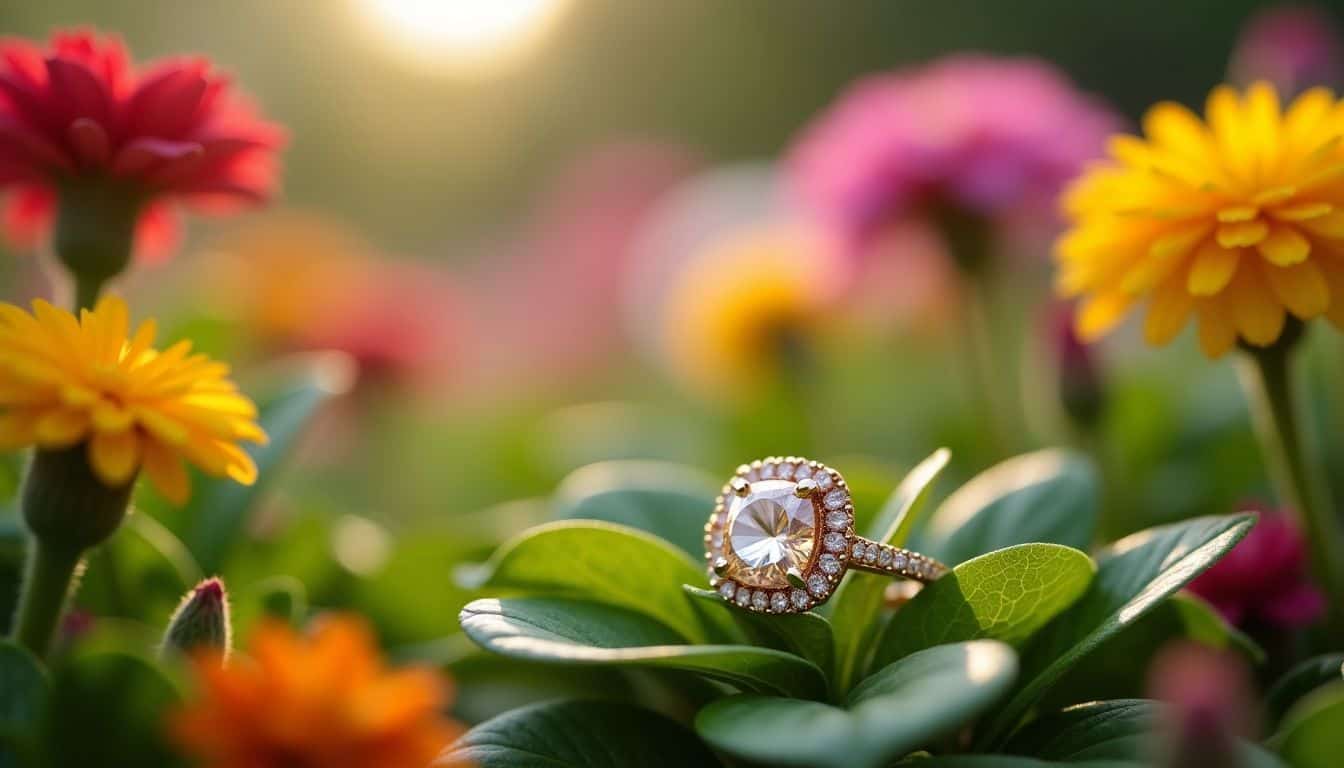
Beyond stories and books, diamonds hold deep meaning in dreams and spiritual beliefs. Dreams of diamonds often point to inner strength and pure thoughts. Many people see these gems as signs of good luck and protection from harm.
The ancient Egyptians linked diamonds to the ankh symbol, which stands for eternal life.
Diamonds are nature’s way of showing us that strength and beauty can exist in perfect harmony.
These precious stones play a big role in spiritual growth and healing. People who practice meditation use diamonds to clear their minds and boost their energy.
The gem’s power to repel bad energy makes it popular in spiritual circles. Diamonds also help improve physical health by making the heart and brain stronger.
Symbolic Meaning of Diamond Shapes
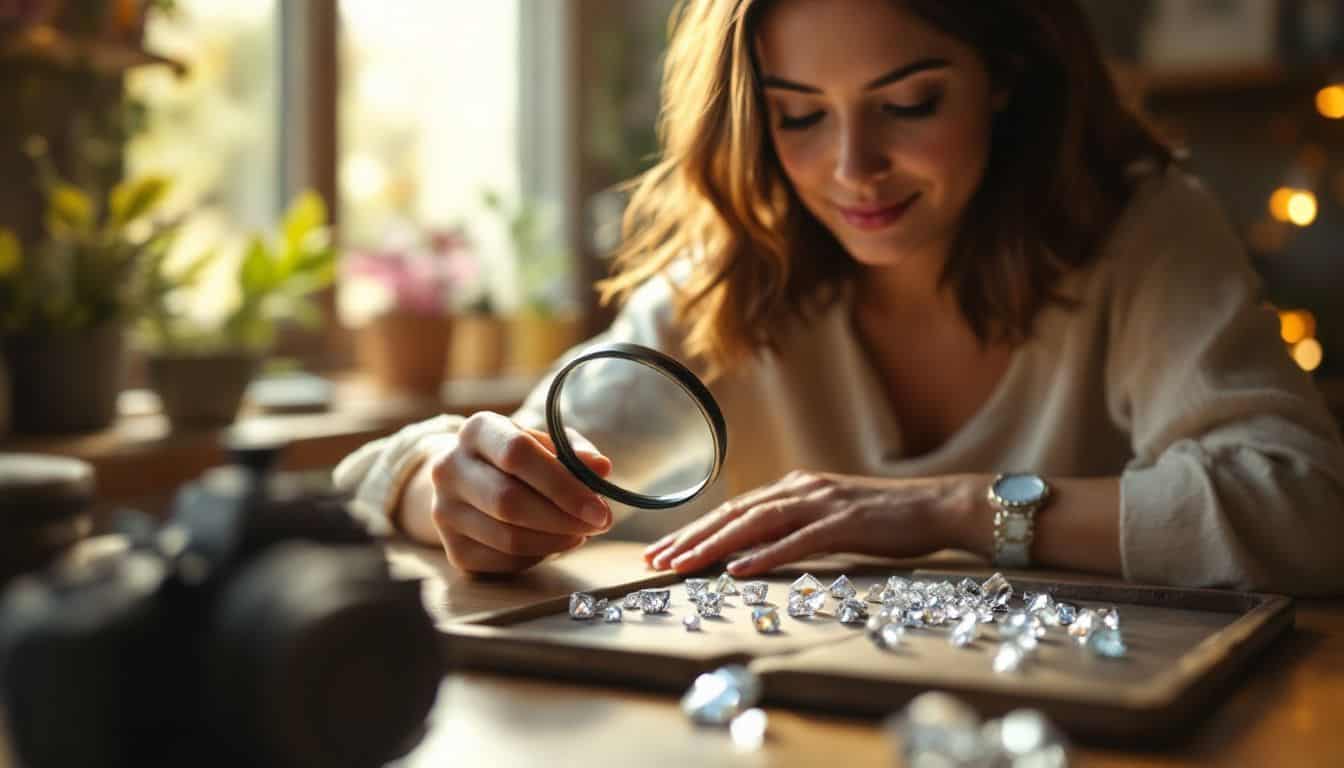
Each diamond shape tells a unique story through its angles and facets – from the classic round brilliant that speaks of timeless love to the bold emerald cut that radiates pure elegance…
Want to discover what your perfect diamond shape says about you? Keep reading to explore the hidden meanings behind these dazzling gems.
Round Diamonds: Perfection and timelessness
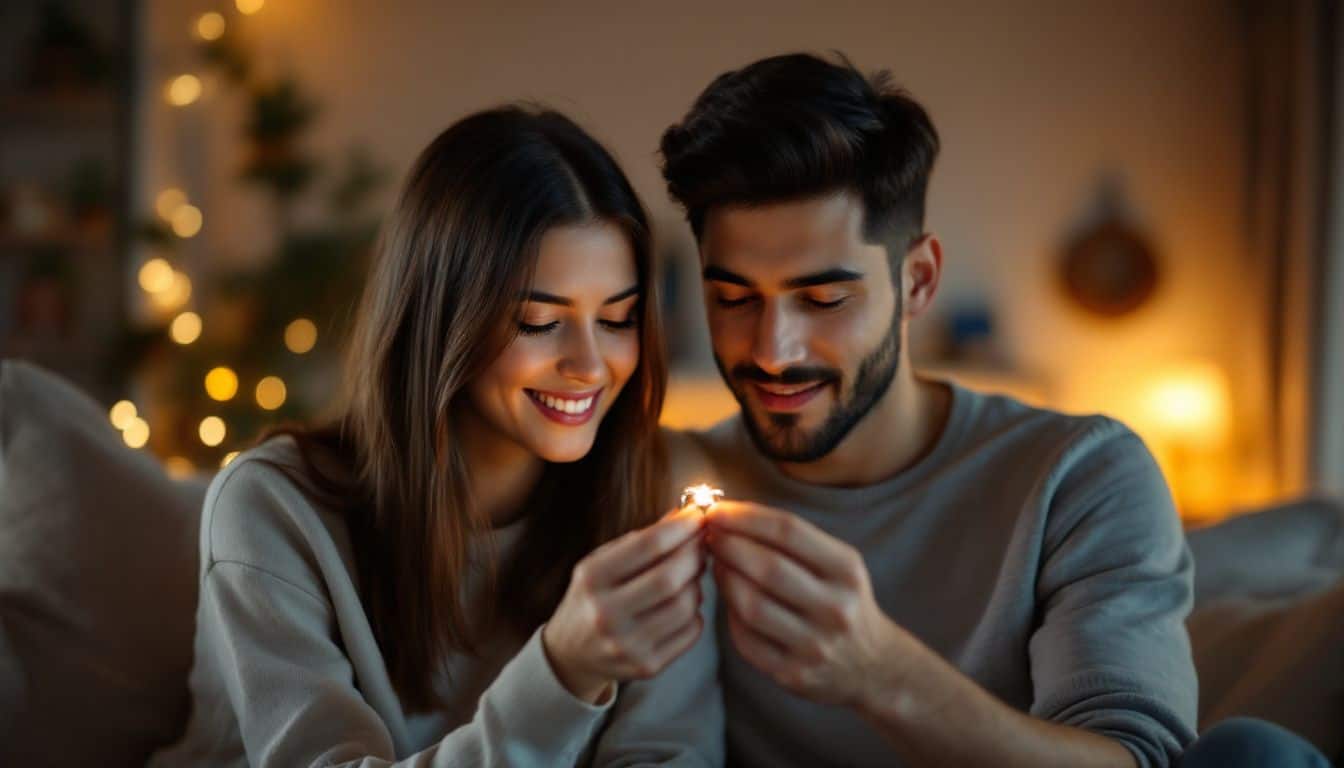
Round diamonds stand as the most beloved choice for engagement rings, gracing over 75% of proposals worldwide. Their brilliant cut creates perfect symmetry and maximum sparkle, making them a true symbol of endless love.
The round shape reflects complete harmony and balance, much like the perfect circle that has no beginning or end.
These diamonds showcase the highest level of brilliance through their facets and superior index of refraction. The round brilliant cut brings out the stone’s natural fire and sparkle in ways no other shape can match.
Their timeless appeal stems from both their perfect geometric form and their ability to catch light from every angle. The classic round shape has stayed popular through countless jewelry trends and fashion changes.
Princess Cut Diamonds: Modern elegance

Princess cut diamonds sparkle with modern grace and sharp angles. These stunning gems feature a square shape that catches light from every direction. The clean lines create a fresh look that speaks to today’s style-conscious women.
Each princess cut shows off trust, understanding, honesty, and communication through its four distinct sides.
The beauty of princess cuts lies in their perfect mix of tradition and modern appeal. Their geometric design maximizes brilliance while using more of the raw diamond than other shapes.
This smart design makes them a popular choice for engagement rings and fine jewelry. The stable square base represents strength in relationships, while the pointed corners add an edge of contemporary style.
Many brides love how these diamonds blend classic elegance with bold, modern flair.
Heart Shaped Diamonds: Love and romance
Moving from modern elegance to pure romance, heart-shaped diamonds stand as timeless symbols of affection. These rare gems first appeared in the 15th century as special tokens of deep love.
The heart shape takes expert crafting to achieve its perfect curves and point, making each stone unique.
Heart diamonds sparkle with fortitude and good fortune in every facet. Royal families treasured these romantic cuts for their powerful meaning of eternal love. The diamond clarity shines through the carefully shaped curves, creating a brilliant display of light and passion.
Many couples choose these meaningful gems for engagement rings and anniversary gifts to express their lasting commitment.
Pear Shaped Diamonds: Joy and uniqueness
While heart shapes speak of romance, pear diamonds offer a fresh take on emotional expression. These teardrop-shaped gems blend round and marquise cuts into one stunning design. The unique shape catches light in special ways, creating bright sparkles that draw attention.
Pear diamonds stand as symbols of tears of joy in many cultures. Their rare shape appeals to people who love both classic style and personal flair. Each pear diamond shows off its own character through different length-to-width ratios.
The pointed tip can face up or down based on personal taste. Many brides pick these stones to make their rings stand out from standard choices. Lab grown pear diamonds give the same beauty while being more earth-friendly.
Emerald Cut Diamonds: Sophistication and boldness
Emerald cut diamonds stand out with their long, clean lines and parallel facets. These stunning gems create a beautiful staircase effect that draws the eye deep into the stone. The bold geometric shape makes a strong statement about personal style and confidence.
Each emerald cut shows off clarity in a unique way, making these diamonds perfect for people who love modern elegance.
The parallel steps of an emerald cut diamond reflect light in bright, dramatic flashes. This special cut brings out the natural strength and beauty of the diamond crystal. Many celebrities and fashion icons choose emerald cut diamonds for their bold impact.
The clean lines pair well with both classic and modern settings, making them a smart choice for engagement rings. Modern diamond lovers now turn to oval diamonds as another option for unique style and grace.
Diamonds in Modern Society
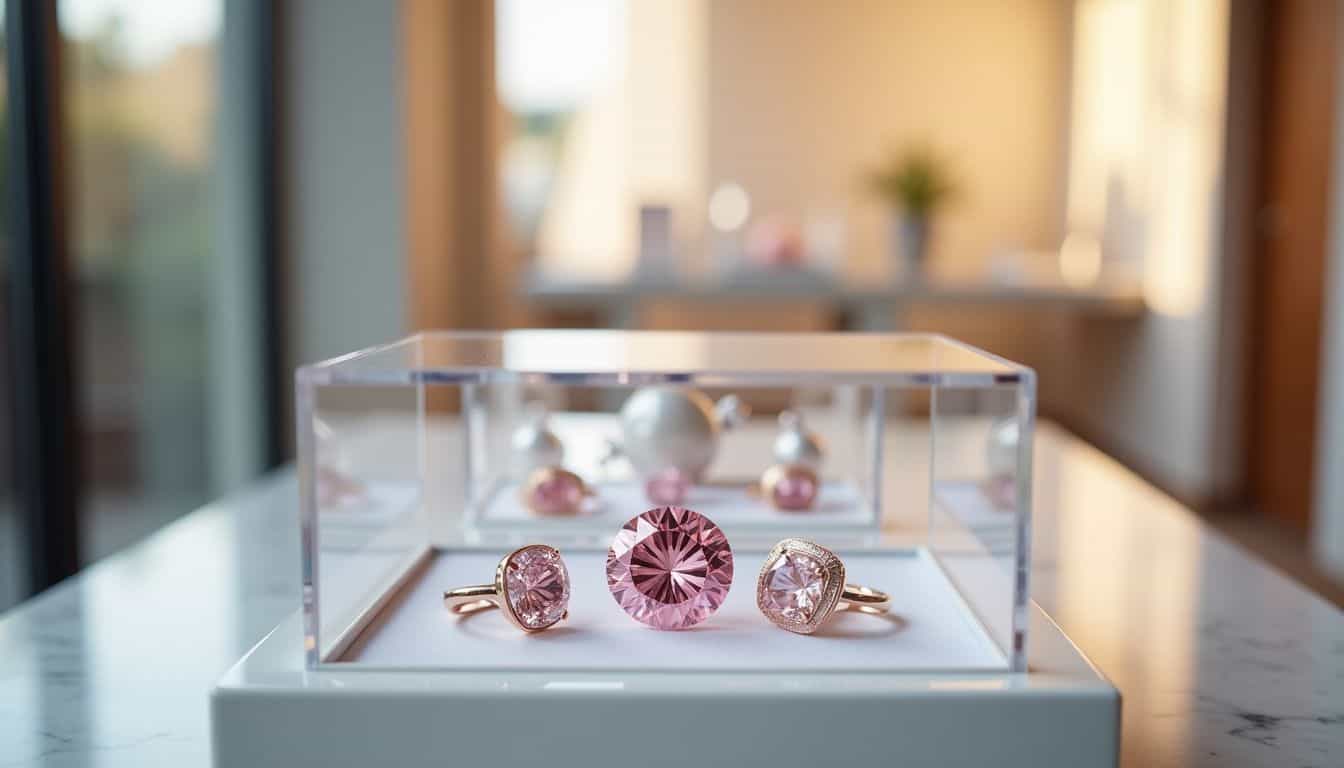
Modern diamonds sparkle with fresh meaning – from lab-grown gems that show ethical values to pink diamonds that mark both love and luxury – making these precious stones more exciting to explore than ever before…
Representation of eternal love in engagement rings
Diamond engagement rings stand as timeless symbols of eternal love. The tradition gained royal approval through Queen Elizabeth II’s stunning 11-diamond ring from Prince Philip in 1947.
Just like family tattoos, these precious gems mark lifelong bonds. Lab-grown diamonds now offer couples more ethical choices while keeping the same sparkle and meaning.
The first diamond engagement ring dates back to 1477, marking centuries of romantic tradition. Pink diamonds and marquise cut diamonds add unique touches to these symbols of commitment.
The chemical structure of diamonds – pure carbon atoms bound forever – mirrors the unbreakable bond between partners. Their clarity grade and diamond colors speak to the pure intentions behind each proposal.
Diamonds as a status symbol
Beyond their role in engagement rings, precious stones serve as powerful markers of social standing. The rise of diamonds as status symbols gained momentum after World War II, as more women joined the workforce and could buy their own jewelry.
These sparkling gems became a clear sign of wealth and success in modern society. Many people view lab grown diamonds as a smart choice to show status while staying ethical.
The link between diamonds and power goes back to the Middle Ages, where nobility used these gems to show their rank. The famous Taj Mahal stands as proof of this tradition – Emperor Shah Jahan gifted the stunning Mumtaz Mahal diamond to his beloved wife.
Today, both natural and lab made diamonds continue to represent achievement and influence across cultures. Their brilliant dispersion and reflection make them perfect symbols of success in business and social circles.
Environmental and ethical considerations
Status symbols often carry hidden costs, and diamonds face growing scrutiny over their environmental impact. The diamond mining industry creates large amounts of mineral waste and greenhouse gas emissions.
Lab-grown diamonds offer a greener choice for eco-conscious buyers. These sustainable gems could cut greenhouse gas emissions by 9.58 million tonnes by 2100. They also reduce mineral waste by 421.06 million tonnes in the same period.
Modern diamond lovers now focus on ethical sourcing and sustainable practices. Lab-grown diamonds save landfill space and protect food production areas from mining damage. These gems match natural diamonds in beauty and quality, while leaving a smaller carbon footprint.
Many buyers choose lab diamonds to support both environmental protection and social responsibility. The shift toward sustainable diamonds shows how self-respect and reasoning guide today’s jewelry choices.
People Also Ask
What makes diamonds so special in different cultures?
Diamonds hold deep meaning across cultures – from ancient Greek philosopher Plato’s views on elements to Buddhism’s vajra symbol. They connect to both love and power through their unique way of catching light.
Which diamond cuts are most popular for showing love?
The most beloved cuts are the radiant cut, emerald cuts, and marquise diamonds. Each cut shows feelings in its own way – like how the rose cut sparkles softly, while the asscher cut makes bold, refracted light.
How did diamonds become linked to meditation practice?
In Buddhism, diamonds became tools for meditation practice. The vajra symbol uses diamond-like elements to show strength and clear thinking – much like how browsers use cookies to keep information clear.
What role did diamonds play in history?
Diamonds shaped history through trade, especially along the sea route to India. Different diamond cuts marked different times – from simple rose-cut styles to today’s fancy marquise diamond shapes.
How do modern websites use diamond symbols?
Today’s websites often use diamond symbols in their privacy notices and browser settings. Just as the radiant cuts reflect light, website elements use diamond shapes to catch attention and share information.
